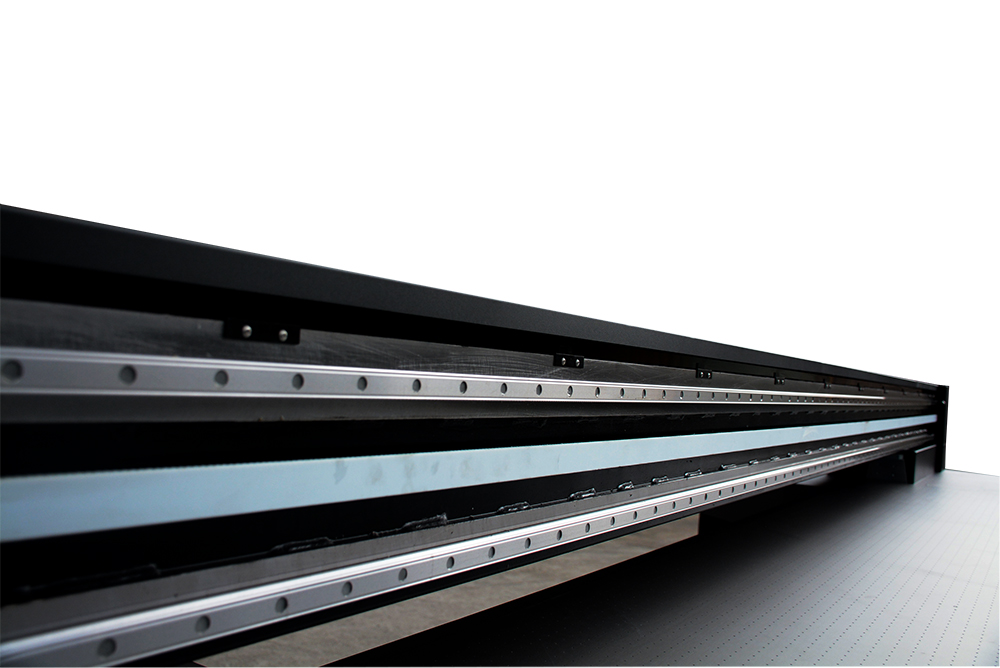UV Flatbed Printer: The Advantages of UV-LED Technology
In the realm of digital printing, UV flatbed printers have emerged as a game-changer, offering unparalleled versatility and efficiency. Among the various technologies powering these machines, UV-LED (Ultraviolet Light-Emitting Diode) stands out for its innovative approach to curing inks. This blog post delves into the key advantages of UV-LED technology in flatbed printing, highlighting why it has become a preferred choice for businesses seeking high-quality, durable, and eco-friendly printing solutions.

A Glimpse into UV-LED Technology
UV-LED technology represents a significant leap from traditional UV curing methods. Unlike conventional UV lamps that emit a broad spectrum of light, UV-LED systems focus on specific wavelengths, typically in the UV-A range (320-400 nm). This targeted approach not only enhances the curing process but also reduces energy consumption and heat generation. The precision of UV-LEDs allows for more controlled and efficient ink curing, resulting in superior print quality and material compatibility.
Enhanced Print Quality and Durability
One of the most notable advantages of UV-LED technology is its ability to produce prints with exceptional quality and durability. UV-LED inks cure quickly upon exposure to UV light, resulting in vibrant colors, sharp details, and long-lasting prints. The fast curing time ensures that the printed material can be handled and packaged almost immediately after printing, minimizing production time and costs. Additionally, UV-LED-cured prints exhibit remarkable resistance to fading, scratching, and chemical exposure, making them ideal for applications ranging from signage and packaging to décor and industrial components.
Broader Material Compatibility
UV-LED technology’s lower heat output enables it to work with a wider range of materials, including heat-sensitive substrates like plastics, fabrics, and thin films. Traditional UV curing methods often require materials to withstand high temperatures, limiting their applicability. UV-LED printers, however, can print on delicate materials without causing damage, opening up new possibilities for creative and industrial applications.
Eco-Friendly and Cost-Effective Operation
In an era where sustainability is paramount, UV-LED technology aligns well with environmental goals. Its lower energy consumption compared to traditional UV lamps reduces carbon footprint and operational costs. Moreover, UV-LED lamps have a longer lifespan, requiring less frequent replacement and maintenance, further contributing to cost savings. This eco-friendly aspect not only appeals to environmentally conscious consumers but also provides businesses with a competitive edge in a market increasingly valuing green initiatives.
Instant Curing for Improved Workflow
Time efficiency is crucial in any production environment, and UV-LED technology excels in this area. The rapid curing process means that printed materials can be handled and finished almost immediately after printing, eliminating lengthy drying times associated with other technologies. This instant curing capability significantly boosts productivity, allowing for faster turnaround times and increased output. For businesses operating under tight deadlines, UV-LED printers offer a reliable solution to streamline workflows and meet customer expectations.
Advanced Color Management and Precision
UV-LED printers are renowned for their exceptional color management capabilities. The precise control over ink curing ensures that colors remain vibrant and consistent across different substrates. This level of precision is particularly valuable in industries where color accuracy is critical, such as advertising, packaging, and fine art reproduction. By minimizing color variations, UV-LED technology enhances the overall aesthetic appeal and marketability of printed materials.
Reduced Maintenance and Longevity
UV-LED printers are designed for durability and low maintenance. Their robust construction and lack of moving parts (like traditional lamps) reduce the likelihood of breakdowns and maintenance needs. This reliability translates into longer machine lifespans and reduced downtime, further contributing to cost savings and operational efficiency. For businesses, this means less interruption to production schedules and more consistent output quality.
Innovative Applications and Future Potential
Beyond traditional printing applications, UV-LED technology opens doors to innovative uses, such as printing on three-dimensional objects, textured surfaces, and even electronics. Its ability to cure inks on non-traditional substrates expands the possibilities for creative and industrial applications. As technology continues to evolve, UV-LED printers are expected to play an even larger role in shaping the future of digital printing.
Conclusion
UV-LED technology in flatbed printing represents a significant leap forward in digital printing capabilities. Its advantages in print quality, material compatibility, energy efficiency, and environmental sustainability make it an ideal choice for businesses aiming to stay competitive in today’s dynamic market. By embracing UV-LED printers, companies can unlock new opportunities for innovation and growth while contributing to a greener, more efficient printing industry.
